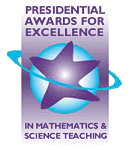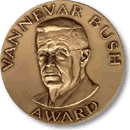 |
 Edging Closer to Tornadoes Edging Closer to Tornadoes
|
 |

Mobile
Doppler Radar Instruments Edge Closer to Swirling
Funnel Clouds
Mobile Doppler
radar instruments funded by the National Science Foundation
(NSF) and deployed by scientists Howard Bluestein
and Joshua Wurman of the University of Oklahoma and
Andrew Pazmany of the University of Massachusetts
are edging ever closer to the funnel clouds of tornadoes
-- including the recent devastating storms in Oklahoma.
One of these storms passed within a half-mile of the
mobile units. NSF supports two complementary projects
with the goal of understanding how tornadoes form
and "decay," and the damage that might be expected
from them. The first project supports the "Doppler
on Wheels," which has been jointly developed by the
University of Oklahoma and the NSF-sponsored National
Center for Atmospheric Research in Boulder, Colorado.
The Doppler on Wheels team collected extensive data
on the genesis of the tornado that struck Moore, Oklahoma.
More...
|
 |

Public
Service Awards Go to Stephen Jay Gould and PBS' "Bill
Nye, the Science Guy"
The National
Science Board (NSB) has named noted paleontologist,
author and science popularizer Stephen Jay Gould along
with the producers of the Public Broadcasting System's
(PBS) Bill Nye, the Science Guy, to
receive the NSB's second annual Public Service Award.
The award honors outstanding individual and organizational
contributions to public understanding of science and
engineering. Gould's investigations of evolution,
together with those of his colleague Niles Eldredge,
have resulted in the seminal concept of punctuated
equilibrium, arguably the most significant insight
into evolution's mechanisms since Darwin. The production
team of the television series, Bill Nye, the
Science Guy, the entertaining and innovative
hands-on science program for young people, is receiving
the NSB's organizational Public Service Award for
1999.
More...
|
 |

President
Clinton Names Outstanding Mathematics and Science
Teachers
President
Clinton has named 208 teachers to receive the Presidential
Award for Excellence in Mathematics and Science Teaching
(PAEMST), the nation's highest honor for mathematics
and science teaching in elementary and secondary schools.
"In winning this award, these teachers have achieved
the equivalent of a winning three-point shot in the
final seconds of the NBA championship playoffs," said
Rita Colwell, Director of the National Science Foundation
(NSF), which administers the award. "Excellence in
math and science teaching shapes our children's intellectual
development, strengthens our educational system, and
advances the national goal to vastly improve the education
of our children. We owe it to the students to cherish
and honor their best teachers."
More...
|
 |

National
Science Board Honors Maxine Frank Singer with Vannevar
Bush Award
The National
Science Board (NSB) has named Maxine Frank Singer,
Ph.D., president of the Carnegie Institution of Washington,
D.C., to receive the 1999 Vannevar Bush Award for
lifetime contributions to science and engineering.
The NSB -- the governing body of the National Science
Foundation (NSF) -- annually honors a senior scientist
and statesperson as a distinguished leader in science,
engineering or technology. The Bush Award recognizes
years of pioneering discoveries, public service and
contributions to the welfare of the nation. Singer's
honor is a result of her many years of pioneering
scientific achievements in molecular biology. She
was also recognized for her activism and creativity
in developing programs in math and science education
for inner-city Washington, D.C., school children and
their teachers.
More...
|
 |
|
Astronomy
Teams Find First Multi-Planet System, Other Than Our
Own, Orbiting Star
The first
believed multiple planet system orbiting around a
sun-like star has been found by independent teams
of astronomers, including National Science Foundation
(NSF)-supported researchers from San Francisco State
University and from the Anglo-Australian Observatory.
In 1996 San Francisco State's Geoffrey Marcy and R.
Paul Butler of the Anglo-Australian Observatory detected
a near Jupiter-sized planet orbiting the star Upsilon
Andromedae. Recently, the scientists, after analyzing
11 years of telescopic observations at Lick Observatory
near San Jose, Calif., picked up signals of what appears
to be two additional planets within the same system
based on newly gathered data. The new data indicates
there are at least a trio of planets orbiting this
star, making the Upsilon Andromedae grouping the first
solar system ever found that mimics our own.
More...
|
 |
 
|

